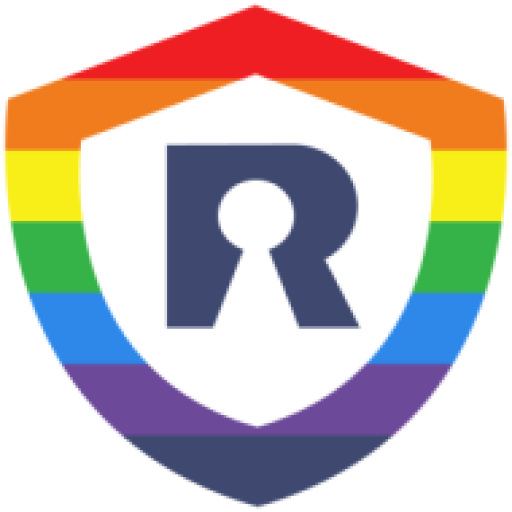Compliance in Healthcare
Healthcare compliance is the practice of adhering to federal healthcare laws and regulations. Compliance laws are intended to help protect patients, safeguard sensitive information and help mitigate and prevent fraud, abuse, and waste in the healthcare industry.
Global healthcare is a trillion-dollar industry focusing on patients’ safety and care. In the U.S., compliance in healthcare is of the utmost importance due to the sheer size of the industry, its risks, and its dynamic nature. These factors open up the possibility of fraud and abuse, and this is where healthcare compliance comes in. Today healthcare organizations must comply with more than 600 regulatory requirements. The healthcare regulations encompass numerous occupational sectors, ranging from pharmacies and insurance companies to cloud service providers.
In this article, you will read about:
What Is Regulatory Compliance in Healthcare?
Healthcare compliance laws
Who is responsible for healthcare compliance?
The importance of compliance in healthcare
The consequences of non-compliance
How Rainbow Secure and Partners can help.
What Is Regulatory Compliance in Healthcare?
Compliance obligations specific to healthcare can include a broad spectrum of practices, but the majority of healthcare compliance issues relate to patient safety, the privacy of patient information, and government reimbursement for healthcare expenditures. In the largest sense, regulatory compliance in healthcare is about providing high-quality patient care.
Healthcare professionals routinely compile and access electronic health records. Therefore, maintaining patient privacy and results as those things are collected has become a vital component of the healthcare industry. Failure to protect all that data — that is, failure to meet compliance obligations — can result in costly monetary penalties from regulators.
Healthcare compliance laws
Many laws regulate the healthcare industry. While the following isn’t an exhaustive list of laws and regulations, these are some important ones:
- Health Insurance Portability and Accountability Act (HIPAA): HIPAA compliance comprises the rules on privacy and security, breach notification, and enforcement for protecting healthcare system information. The HIPAA Privacy Rule applies to all healthcare providers and entails all media: electronic, paper, and oral. It grants patients the rights to see their protected health information (PHI) and requires disclosure of how that information is used. Healthcare facilities are also obliged to update security measures to continue safeguarding medical records in a changing environment. Under HIPAA, the Department of Health and Human Services (HHS) sets boundaries on the release of health records and establishes fines for violations.
- Health Information Technology for Economic and Clinical Health (HITECH) Act: HITECH expands the scope of HIPAA and provides healthcare facilities with certain standards for using IT to implement electronic health records (EHR). The HITECH Act reinforces two major initiatives: promoting the proper use of electronic health records and cybersecurity measures; and showing further support for HIPAA enforcement.
Before the HITECH Act, only a small number of hospitals adopted electronic medical record systems, which led to a rise in inefficiencies in public health. HITECH was meant to encourage more use of electronic medical records while preserving the privacy and security of healthcare data.
- Emergency Medical Treatment & Labor Act (EMTALA): This law was enacted to ensure the public can access emergency treatment regardless of whether they can pay.
- Patient Safety and Quality Improvement Act (PSQIA): This law was enacted to encourage the reporting, discussion, and resolution of patient safety issues. It also authorizes the Agency for Healthcare Research and Quality to provide a database of Patient Safety Organizations (PSOs). The goal of this law is to stimulate safety culture by providing peer review assessments for the information reported on healthcare errors. The law established new patient safety organizations (PSOs) to prevent the information from being used in lawsuits against the PSO.
The PSO acts as the principal vehicle to gather data about adverse medical events and to assist providers in implementing practices to reduce adverse events and build cultures of safety while increasing the quality of care.
- Anti-Kickback Statute: A statute that prohibits providers and organizations from receiving financial incentives for a patient referral when the federal government may be charged for those services. The Anti-Kickback Statute and the Stark Law are designed to keep medical treatment decisions free from the influence of hidden financial arrangements between healthcare workers and hospitals. These laws are important because improper financial incentives can lead to improper medical decision-making and higher expenses for Medicare and Medicaid Services.
- False Claims Act (FCA): Under the FCA, filing a false claim for federal program funds is illegal and punishable with fines from $11,803 to $23,607.
These laws are in place primarily to protect patients and ensure that all individuals have equitable access to healthcare in the U.S.
Who is responsible for healthcare compliance?
Everyone in a healthcare organization must adhere to the healthcare regulations established by the government. It’s the responsibility of every professional to make sure they are acting ethically and according to all laws. Many healthcare organizations have a compliance officer, or a similar role, to help ensure the facility is compliant.
Having someone in a designated role can help make it easier for a facility to coordinate or communicate with government agencies or third-party organizations that maintain healthcare compliance standards.
Multiple government agencies and a not-for-profit organization are involved in maintaining compliance programs:
- Department of Health and Human Services (DHS): A federal agency focused on improving the health, safety, and well-being of every American.
- Drug Enforcement Administration: A federal government agency tasked with combating drug trafficking and distribution in the U.S., including prescription drugs.
- The Joint Commission: A not-for-profit institution that introduced a standard for the accreditation of healthcare organizations in the U.S.
- Office of the Inspector General: An office within the U.S. Department of Health and Human Services whose mission is to protect the integrity of DHS programs through audits and investigations.
- Food and Drug Administration (FDA): An entity that regulates the information that must be included and disclosed on prescription drugs. The FDA also approves or disapproves of prescription drugs to be used in healthcare.
These entities can provide resources and guidance on any healthcare compliance issues you might encounter.
The importance of compliance in healthcare
A compliance program in healthcare is important for many reasons. Healthcare compliance is meant to help prevent fraud or abuse of patients. Healthcare compliance and regulations also protect patient privacy and safety and encourage healthcare professionals to provide high-quality care to all patients. It also dictates how to bill patients properly. Not only do compliance program regulations protect people, but they also protect valuable information.
Complying with health information technology laws and regulations can help protect against any potential data breaches or cybersecurity threats. Adhering to the federally instated laws and regulations allows a healthcare organization to protect its patients and become a credible organization.
The consequences of non-compliance
In healthcare, the consequences of non-compliance are serious and may result in legal actions. The consequences are major because of the risk to patient safety and privacy that noncompliance poses.
If a healthcare organization is non-compliant, it will face fines and legal charges, not to mention a damaged reputation. Patients seek high-quality care; if they are in the market for a new healthcare provider, they are more likely to choose one who hasn’t been involved in a lawsuit or complaint.
How Rainbow Secure and Partners can help
Healthcare’s rapid transition to digital—where electronic medical records and online patient portals are the norms—has created new challenges in securing access to personal health data and clinical applications. This, combined with evolving compliance regulations, such as HIPAA & DEA, is driving a need for technologies that strengthen security while enabling clinicians to readily access patient information and applications.
Rainbow Secure helps healthcare organizations meet these demands with our comprehensive Identity and Access Management (IAM) platform, “Rainbow Secure Identity”. Our clinical workflow solutions give providers the tools they need to streamline access, increase clinician efficiency, and protect patient privacy.
Meaningful Integrations into EMRs and other healthcare system apps
Effective integration between software applications is essential in the healthcare industry and the battle toward complete interoperability. Rainbow Secure understands this essential need, which is why we make integration with other platforms a critical step when designing our solutions to deliver specialized support.
- Rainbow Secure offers industry-standard methods to integrate Windows and web-based applications (custom in-house and 3rd party cloud-based apps) — without long clumsy deployment cycles.
- Granting access to healthcare workers with multiple personas can be very tricky. Most healthcare organizations have personas like employees, community providers, hospice, volunteers, contractors, and external providers that all need different types of access.
- Role-based access, stress-free graphical identity & login security and single sign-on with versatile apps (office, clinical, finance, HR, community care…) make rainbow secure the ideal choice.
Providers and Nurses have many systems to log in during the day. Rainbow Secure understands their unique needs and offers convenient ways for them to log in, reverify without compromising security and patient data privacy. We have a solution:
Rainbow Secure Identity and Single Sign-on powered by Rainbow Secure Login Options for Healthcare
Other Cutting-Edge Solutions from Rainbow Secure
Secure Workforce & Customer login Use Authentication Plug-in by Rainbow Secure to secure workforce and customer logins. In this plug-in, you get a multi-dimensional password, passwordless login solutions with AI monitoring, Risk Analytics, and location fencing.
Meet Compliance Requirements: Use Authentication Plug-in by Rainbow Secure with your business application and in SSO (Single Sign-on) and meet industry standards and compliance regulations such as NIST, ISO, FTC, SOX, SOC2, CMMC, CMMI, HIPAA, PCI, and others.
Securely communicate and Collaborate: Use Secure Business Email by Rainbow Secure and get protection against account takeover, phishing, ransomware, and automated login cyber frauds. In this email, you get options to send encrypted emails, single sign-on with Office 365, and Google, and 1 TB one drive storage.
Connect Business applications: Get one unified login using Rainbow Secure Single Sign-On
Manage User Onboarding / OffBoarding using Rainbow Secure IAM
Verify User using Smart Multi-factor MFA
Do you have more questions about Compliance in Healthcare? Contact us today. Email us at: Hello@rainbowsecure.com






